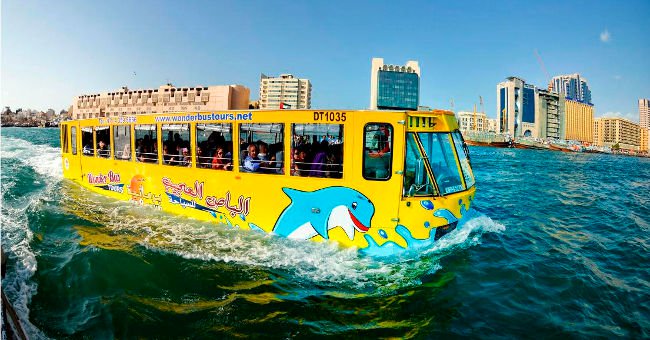How does the bus in the river work?
Buses on the river are a type of traffic that has appeared in some countries around the world. These types of vehicles that can both run and run on land are often called amphibious, amphibious or amphibious vehicles.
Currently in the world there are many types of vehicles that can run underwater such as buses, cars, motorcycles, trucks, military vehicles .
In particular, buses on the river can run both on land and underwater to serve tourism widely used in quite a number of countries around the world because of mobility such as Korea, Netherlands, and the United Arab Emirates. Unity . Visitors do not have to change or transfer trains but still can admire the city and the river during a trip.

This water-based, moving medium has been invented by Oliver Evans in 1805 in the United States. At that time, they were mainly used in the military field.
Unlike regular buses, amphibious buses are closed to the lower body. To prevent water from entering the cabin, the wheels and chassis are enclosed. Vehicles can move both in freshwater and saltwater environments. Each car can carry between 46 and 55 passengers.

The case is made of 6 - 12mm thick aluminum or 3 - 6mm thick stainless steel, which can stabilize the body when floating. The bottom-close design consists of partitions to prevent buses from sinking. Even if there is a hole inside, the car can still be balanced and float on the water. Each compartment has a water pump or foam insertion pump system.
The principle of operating amphibious buses is to use two transmission systems. When on the ground, take energy from the engine to the wheels and act like other normal buses. When entering the water, the propeller or pressure pump mounted below the floor of the vehicle works due to the energy transmission engine.

Water buses are considered one of the safest passenger transports in the world. Currently, amphibious buses are cheaper, cost less fuel and have higher speeds, they can reach 140km / h when on land and 15km / h while under water.
In 2017, people in Ho Chi Minh City will have the opportunity to take a bus on the Saigon River when the HCMC Department of Transportation launches two river routes to ease the pressure of road traffic jams.
- Why are you and many other countries in the world driving on the left?
- Discover the mystery of a car stop in less than 2 seconds at Formula 1 track
You should read it
- The source of biofuels from coffee can be used to operate buses
- How to Become an Auto Body Painter
- Good news: Google Maps has supported navigation for motorcycles in Vietnam
- How to find the way to Google Maps for motorcycles
- The most beautiful but dangerous rivers in the world
- The Amazon River has a life expectancy of at least 9 million years
 40 greatest inventions in human history (part 1)
40 greatest inventions in human history (part 1) The spices are effective in making medicine in Tet trays
The spices are effective in making medicine in Tet trays Listen to virtual assistant Alexa pronouncing the name of Europe's longest town
Listen to virtual assistant Alexa pronouncing the name of Europe's longest town 3 types of friends you should have in your life
3 types of friends you should have in your life Top 27 cities with the best quality of life in the world
Top 27 cities with the best quality of life in the world See spectacular table tennis balls that open both the bottle of soft drinks
See spectacular table tennis balls that open both the bottle of soft drinks